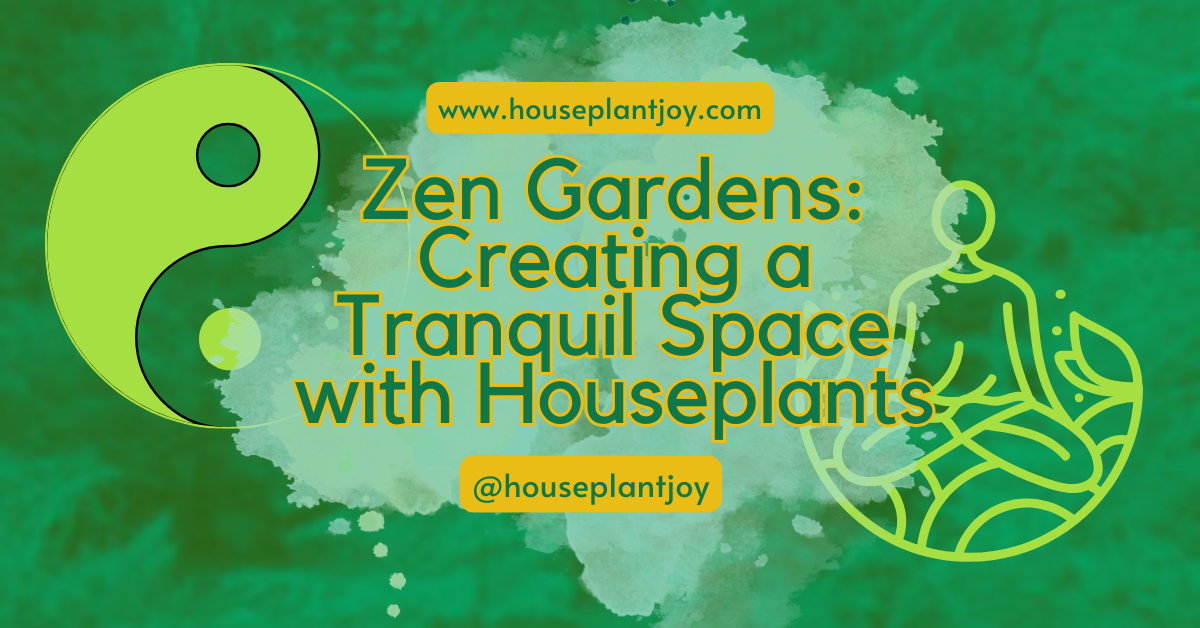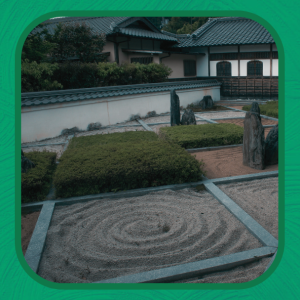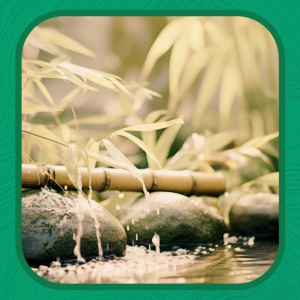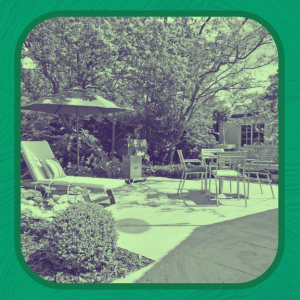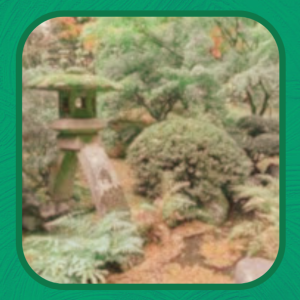HousePlantJoy is supported by our audience. When you purchase through one of our links, we may earn a small affiliate commission. As an Amazon Associate I earn from qualifying purchases. Your cost is not affected.
==================
With their minimalist appeal, Zen gardens have long been associated with tranquility and meditation. The practice of creating a Zen garden, originating in Japan, is not just an exercise in aesthetic design but also a way to create a peaceful retreat in your own home.
When it comes to designing a Zen garden, the focus is on natural elements, simplicity, and serenity. Incorporating houseplants into this space can enhance its calmness, bringing a touch of nature’s vitality indoors.
Zen Gardens: Creating a Tranquil Space with Houseplants for Indoor Serenity
To design your own Zen space with houseplants, begin by understanding the basic principles of Zen garden aesthetics. The art of placement, the significance of rocks, sand, and the careful selection of plants that will complement the surroundings without overwhelming them.
Your Zen garden should serve as a sanctuary for mindfulness and meditation, a place where you can engage in quiet contemplation away from the bustle of everyday life. Achieving this requires thoughtful choices and an approach that values the subtle beauty of empty space as much as the objects that occupy it.
Key Takeaways
- A Zen garden with houseplants promotes tranquility through minimalist design.
- Thoughtful element selection and placement encourage mindfulness and meditation.
- Regular maintenance ensures the enduring peace and clean aesthetic of your Zen space.
Fundamentals of Zen Garden Design
Creating a Zen garden involves more than just aesthetics; it’s about embodying a philosophy of harmony and tranquility. Here, you’ll learn how the elements come together and how to select the perfect spot for your Zen retreat.
Understanding the Zen Philosophy
Zen philosophy prioritizes simplicity, natural beauty, and a sense of deep calm. Your Zen garden should serve as a peaceful sanctuary where you can reflect and meditate. These spaces are deeply rooted in the principles of minimalism and balance, aiming to replicate the intimate essence of nature in a more controlled and stylized manner.
Elements of a Zen Garden
The traditional elements of a Zen garden include rocks, gravel, sand, and wood, with sparing use of plants. Here’s a concise layout:
- Rocks: Symbolize mountains and islands.
- Gravel/Sand: Represents water, raked to resemble ripples and waves.
- Wood: Often found in bridges and gates, adding structural elements.
- Plants: Typically limited; mosses or small shrubs may be included.
Designing your garden means arranging these elements to maintain asymmetry yet balance, promoting thoughtful consideration and inner stillness.
Choosing the Right Location
Select a location for your Zen garden that is shielded from daily disturbances. It should be a spot where natural elements already exist in harmony, allowing you to enhance and personalize the space. Consider aspects like shade, sunlight, and privacy when choosing your garden’s location to ensure it will be conducive to the meditative space you’re creating.
Incorporating Houseplants
In a Zen garden, the plants you choose and how you arrange them are as crucial to the ambiance as silence is to meditation.
Selecting Houseplants for Zen Spaces
When you’re curating houseplants for your Zen space, focus on those that evoke a sense of calm and require minimal fuss. Plants like the peace lily or snake plant have air-purifying qualities and a visually soothing aesthetic. Opt for evergreen shrubs that maintain their tranquil appearance throughout the seasons, underscoring the Zen celebration of continuity and impermanence.
Arrangement Techniques
The placement of your houseplants should embrace the principles of simplicity and balance. Create focal points with solitary larger plants, while groupings of smaller pots can provide visual harmony.
Use the asymmetry to draw the eye and promote a journey through the Zen space. Experiment with elevations, like a plant shelf or a dedicated plant corner, to add depth, as mentioned in the guidelines on creating a relaxing oasis at home.
Caring for Indoor Zen Garden Plants
Your Zen garden’s tranquility extends to how you care for your plants. Stick to a watering schedule that keeps the soil moist but not waterlogged and dust leaves regularly to enable photosynthesis.
Remember: the serene appearance of your Zen space is a reflection of the health of your plants. So gentle and attentive care is paramount for maintaining both aesthetics and plant vitality. Consider easy-to-care-for varieties discussed in creating a Zen garden guide to reduce maintenance and enhance your garden’s serenity.
Designing Your Zen Garden
Creating a tranquil Zen garden hinges on thoughtful placement of natural elements, intentional pathways to cultivate flow, and well-chosen containers that enhance the minimalist aesthetic.
Incorporating Natural Elements
Rocks and Gravel: Use rocks to symbolize mountains and gravel to represent water. Raking the gravel allows you to create waves, promoting a sense of calmness. Plants should be sparse and carefully selected for simplicity and harmony.
Plant Choices:
- Moss for greenery and softness
- Bamboo for height and structure
Creating Pathways and Zones
Pathways: Generate a deliberate course through your garden using stepping stones or raked gravel paths. This guides your movement and sight, leading to different zones of contemplation.
Zoning:
- Seating Area: A place for stillness
- Sand or Gravel Area: For meditative raking
- Plant Area: Showcasing minimalist vegetation
Selecting Containers and Pots
Choose containers that reflect your Zen garden’s natural aesthetic and neutral tones. Pots should be unobtrusive yet functional, blending seamlessly with the other natural elements.
Pot Materials:
- Ceramic: Traditional and sturdy
- Stone: Blends with the natural elements
Ensure that the containers you select do not overpower the plants they hold but rather create a sense of unity with the garden’s overall design.
Enhancing Tranquility
To craft a tranquil space with Zen garden principles, focus on meticulously chosen elements that promote peace and mindfulness in your home.
Using Water Features
In your Zen garden, a water feature such as a small fountain or a reflecting pool can significantly enhance the serene atmosphere. The sound of trickling water introduces a soothing auditory element that can help in calming the mind. Consider a tabletop water fountain as a manageable and elegant option that fits well in a smaller indoor space.
Incorporating Lighting
Careful lighting choices can transform your indoor garden into a tranquil retreat, even during evening hours. Soft, ambient lighting, such as LED candles or dimmable wall sconces, sets a calm mood and highlights the natural beauty of your houseplants without overwhelming the senses. Be mindful to avoid harsh lighting, as it can disrupt the peaceful energy you aim to cultivate with your Zen garden.
Mindfulness and Meditation
Creating a tranquil space with a Zen garden in your home can greatly enhance your mindfulness and meditation practice. Your Zen garden is more than just an arrangement of rocks and plants. It’s a personal sanctuary for reflection and inner peace.
Meditation Practices in Your Zen Garden
To engage in meditation practices in your Zen garden, start by choosing a focal point, such as a specific plant or an arrangement of stones. Sit comfortably and direct your attention to your breathing, allowing the natural elements to anchor you in the present moment. Incorporating the simplicity of the Zen garden into your meditation helps cultivate a deeper sense of calm and awareness.
Fostering a Mindful Atmosphere
Creating a mindful atmosphere involves carefully selecting plants and elements that resonate with tranquility. Consider integrating houseplants that require little maintenance, allowing you to focus on the sensory experience — the textures, the scents, and the visual harmony.
The simplicity of the Zen garden is paramount. It should invite you to slow down, fostering mindfulness through its very design.
Maintenance and Upkeep
Proper maintenance and upkeep are essential to ensure that your Zen garden remains a place of tranquility. From routine care of houseplants to combating pests, regular attention is key.
Routine Care for Houseplants
You need to be consistent with their care to keep your houseplants thriving in your Zen garden. Water your plants when the top inch of soil feels dry to the touch, and provide fertilizer every 4-6 weeks during the growing season.
Ensure they receive the right amount of light. Most Zen garden plants prefer indirect but bright light.
Seasonal Adjustments and Pruning
As seasons change, so do the needs of your plants. In spring and summer, increase watering and rotate plants for even growth.
During fall and winter, reduce watering and prune back any overgrown foliage. Pruning not only maintains the shape of your plants but also encourages healthy growth and flowering.
Dealing with Pests and Problems
Vigilance is vital in preventing and addressing pests. Inspect your plants regularly for signs of infestation, like discolored leaves or sticky residue.
If you find pests, isolate the affected plant and use an appropriate pesticide or organic solution, such as neem oil. Remember to clean fallen leaves and debris to avoid attracting pests.
Video Credit: @PlantDoHomeGarden
Wrapping It Up
Creating a Zen garden with houseplants brings tranquility indoors. Choose calming plants like bamboo or ferns. Arrange them in peaceful, simple designs.
Remember, a Zen garden is for relaxation. Take time to care for your plants and enjoy the serenity they bring. Your indoor Zen garden is a peaceful retreat!
Frequently Asked Questions
What elements are essential for creating a sense of tranquility in an indoor Zen garden?
To cultivate tranquility in an indoor Zen garden, it is crucial to use elements that mimic natural landscapes. Smooth stones, flowing sand patterns, and carefully chosen houseplants that don’t overwhelm the space are essential. Simplicity and balance are key to maintaining a serene atmosphere.
How can houseplants be integrated into Zen gardens to enhance calm and mindfulness?
Houseplants enhance calm and mindfulness in Zen gardens by adding a living element that represents growth and renewal. Position plants like the slow-growing bonsai or the evergreen snake plant in your Zen garden to bring a sense of life and natural beauty that fosters a meditative state.
What maintenance considerations should be kept in mind for sustaining the peacefulness of a Zen garden with houseplants?
Maintaining a Zen garden with houseplants requires regular care with minimal disruption. Choose plants requiring light and water similar to your garden’s location to simplify care routines. Prune and tend to your plants gently and mindfully to preserve the tranquility of the setting.
How to select houseplants that best complement the aesthetic of a Zen garden?
When selecting houseplants for a Zen garden, opt for species that embody simplicity and grace. Plants like mosses thrive in shade, or a well-placed Japanese maple can complement the minimalist aesthetic. Avoid overly bright or large flowering plants that may distract from the garden’s calmness.
What role does the arrangement of plants and rocks play in the traditional design of a Zen garden?
The traditional design of a Zen garden uses the arrangement of plants and rocks to symbolize natural landscapes. Rocks can represent mountains, while raked sand or gravel mimics water ripples. Position plants and stones mindfully, considering their visual balance and the flow of energy they create within the space.
In what ways do Zen gardens with houseplants contribute to stress reduction and mental well-being?
Zen gardens with houseplants contribute to stress reduction by promoting a soothing atmosphere where one can disconnect from daily strife. The presence of greenery is known to reduce anxiety, and the act of tending to a Zen garden can be a form of meditation, encouraging present-moment awareness and mental clarity.
Learn More About Houseplants!
Discover more types of houseplants, their benefits, and how to care for them with us! Join us on Facebook, Instagram, and Twitter for beautiful photos, plant care tips, and a community that celebrates the joy of indoor gardening.
Facebook: https://www.facebook.com/houseplantjoyblog
Instagram: http://instagram.com/houseplantjoy20
Twitter: https://twitter.com/HouseplantJoy
Let’s nurture our green spaces together!

